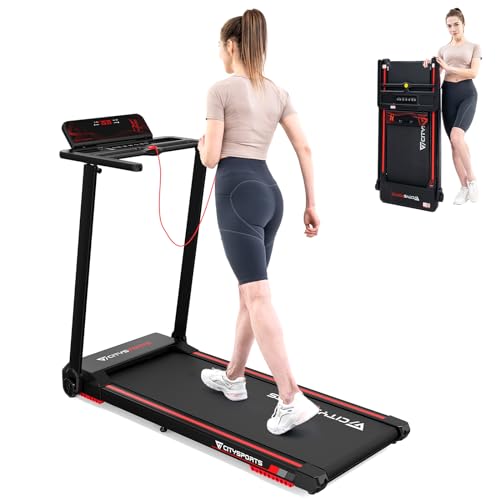
Home Treadmills Uk
Add a reviewOverview
-
Founded Date June 7, 1901
-
Sectors Telecommunications
-
Posted Jobs 0
-
Viewed 57
Company Description
A Guide To Walking Machine In 2024

The Walking Machine: A Comprehensive Guide to Your Fitness Companion
In today’s hectic world, where time is a high-end, maintaining a consistent exercise routine can be an obstacle. For numerous, a walking machine– commonly referred to as a treadmill– functions as an ideal fitness companion. This post provides an extensive take a look at walking machines, including their advantages, types, upkeep ideas, and frequently asked questions.
Why Choose a Walking Machine?
Walking machines provide a useful and effective method to integrate cardiovascular workout into every day life. Here are a number of essential advantages:
- Convenience: Walking machines permit people to exercise anytime, despite weather conditions or time constraints. They are ideal for busy schedules.
- Versatility: Users can walk, jog, or perform at their own rate and intensity.
- Security: Walking machines provide a lower danger of injury compared to outdoor walking or running, particularly for beginners or those recovering from injuries.
- Tracking Progress: Many treadmills featured integrated screens that track metrics like speed, distance, and calories burned.
Kinds Of Walking Machines
When considering a walking machine, it’s important to choose the right type based upon specific physical fitness objectives and area constraints. Below are the main kinds of walking machines:
| Type | Description |
|---|---|
| Manual Treadmills | These machines do not have a motor, and users need to stroll or run to rotate the belt. |
| Electric Treadmills | Powered by an electric motor, enabling users to set the speed and incline easily. |
| Folding Treadmills | Developed for easy storage, these treadmills can be folded up when not in use. |
| Desk Treadmills | Suitable for a dual work and exercise environment, these compact machines enable walking while working. |
| Slope Trainers | These enable users to mimic uphill walking, boosting exercise intensity and calorie burn. |
Choosing the Right Walking Machine
Selecting the best walking machine can significantly affect inspiration and efficiency. Here are some factors to think about:
Key Features to Look For
- Motor Power: A powerful motor ensures a smooth and consistent exercise. For periodic walkers, a 1.5 HP motor is generally adequate; for heavier usage, look for 3.0 HP and above.
- Belt Size: A wider and longer belt supplies more area for a comfy stride. Requirement sizes range from 16 inches wide and 50 inches long.
- Slope Options: Adjustable incline settings can imitate walking or running uphill, increasing the intensity of the exercise.
- Shock Absorption: Good shock absorption decreases the risk of joint injuries and improves comfort.
- Console Features: Look for built-in exercises, heart rate monitors, and connection features like Bluetooth for a more interesting experience.
Budget plan Considerations
Walking machines can be found in a wide variety of prices, depending upon functions and building and construction quality. Here’s a rough budget plan breakdown:
| Price Range | Functions |
|---|---|
| Under ₤ 300 | Basic manual or small electric treadmills with restricted functions. |
| ₤ 300 – ₤ 700 | More sophisticated electric treadmills with incline, medium power motors, and much better warranties. |
| ₤ 700 – ₤ 1500 | Top quality electric treadmills with bigger built-in display screens, extensive functions, and service warranties. |
| ₤ 1500 and above | High-end models providing advanced technology, features, and resilient building for serious physical fitness enthusiasts. |
Maintenance Tips for Your Walking Machine
To ensure longevity and ideal performance of a walking machine, consider the following maintenance ideas:
- Regular Cleaning: Dust and sweat can collect on the machine and the belt. Clean down the surface areas and clean the belt regularly.
- Lubrication: Depending on the design, lubricating the running belt periodically can prevent wear and tear. Check the producer guidelines for suggested lubrication schedules.
- Examination: Periodically inspect the machine for loose screws or used parts. Tighten and replace as required.
- Calibration: Occasionally, check the calibration of your machine’s metrics to ensure they offer accurate information.
- Correct Use: Follow the maker’s suggestions for weight limitations and operational standards.
FAQs About Walking Machines
1. Are walking machines an excellent workout?
Yes, walking machines supply an outstanding cardiovascular exercise, can help with weight reduction, and improve overall health.
2. How typically should I utilize a walking machine?
Objective for a minimum of 150 minutes of moderate-intensity aerobic activity per week, which can quickly be attained with regular sessions on a walking machine.
3. Can I drop weight on a walking machine?
Yes, including a walking machine routine into a healthy diet plan can promote weight reduction, specifically if integrated with periods and incline training.
4. Is it safe for senior citizens to use a walking machine?
Yes, walking machines can be safe for elders with low-impact settings and security features like handrails. Nevertheless, individuals need to seek advice from with their healthcare company before beginning any exercise program.
5. What’s the difference in between a treadmill and a walking machine?
The term “walking machine” usually describes a treadmill planned for walking, while “Treadmill near me” can refer to machines utilized for different intensities, including running.
With their versatility and benefit, walking machines can significantly enhance one’s fitness journey. By thoroughly choosing the best type, guaranteeing proper maintenance, and integrating various exercise techniques, users can optimize their walking machine’s advantages. Similar to any exercise routine, consistency is essential to achieving enduring fitness outcomes.

